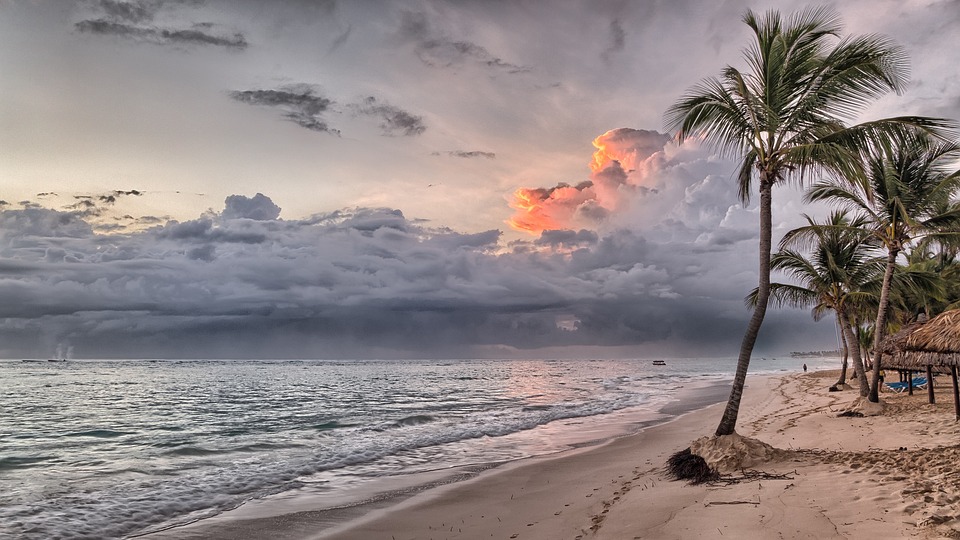Cyprus is the Mediterranean’s third largest island, and with amazing weather, a fascinating history, and more beaches than you could visit in a lifetime, it’s also becoming one of the most popular tourist destinations in Europe. Cyprus is, however, still a country divided. In 1974, a Turkish invasion led to the division of Cyprus into two countries: Northern (Turkish) Cyprus and Southern (Greek) Cyprus. And while the Greeks got both the larger half of the island and a larger share of the visiting tourists, the Northern (Turkish) half of the island got some amazing beaches, beautiful cities, and a lot worth visiting.
Kyrenia
The harbor city of Kyrenia (commonly referred to by its Turkish name, Girne) is probably the biggest tourist destination in all of North Cyprus. Built around a pretty curved harbor, the town is very much North Cyprus’s cultural center, with great museums and art galleries, and a lively nightlife. And while most visitors come to Cyprus for the great beaches and sunshine, Kyrenia has a lot more to offer than sun-soaked sand.
Along the picturesque harbor is where the lively, beating heart of the city lies. With great restaurants, quiet cafes, and plenty of terrific places to shop, the harbor is where you go to relax and unwind after a day at the beach. Built behind the harbor is the city’s old town, full of tiny, winding streets and hidden little courtyards. While the city itself isn’t very big, there are so many hidden gems built along its streets that you can spend days rambling along them.
Also located next to the harbor is the famous landmark, Kyrenia Castle. The castle dates back to the late 1300s, and is a wonderful place to climb up and get a bird’s eye view of the city and the island. And inside Kyrenia Castle you’ll find the Shipwreck Museum, which lets visitors get a peek at one of the oldest shipwrecks ever recovered from the sea.
North Nicosia
Nicosia is the world’s last divided city. Areas of the city that had been previously set aside for the Greeks and the Turks were officially divided in 1974. And while the south (Greek) side of Nicosia is considered the rich and cosmopolitan side of the city, the North side also has a lot to offer– that is, in addition to being the place where you cross over into South Cyrpus.
North (Turkish) Nicosia has a truly timeless feel about it. It seems like not much has changed in the decades since the division, and walking around the quiet, simple streets feels like a trip back in time. The best way to explore the city, especially the old town with its small squares and old-time charm, is through a walking tour. And no tour is complete without a visit to the city’s many Turkish baths, or hammams.
There are also two markets located near the center of North Nicosia, where you can find anything from fresh fruits and vegetables to shoes to hand-woven cloths. And between them is North Nicosia’s most important landmark, the Selimiye mosque. Probably the most fascinating mosque you’ll ever see, the Selimiye mosque looks like (and is!) a cross between a traditional mosque and a Gothic church.
Famagusta
Famagusta is worth a visit for anybody with an interest in history. Because this one city has more history than some entire countries! Since being founded in 285 B.C., it’s had more up and downs than you could count.
Fortunately for visitors, Famagusta is definitely at an “up” stage right now. Though the famous walled city still maintains its medieval charm, a major restoration project started there in 1996 has brought the city full-swing into the modern world. In the center, there are wonderful restaurants and small cafes sitting nose to nose with beautiful old buildings, and picturesque old streets where you can spend hours wandering.
One of the biggest attractions of Famagusta is Othello’s Tower, where you can climb up to get a view of the city and the port. This is the very tower mentioned in Shakespeare’s famous play, and is the tourist center of the city. Another must-see Famagusta attraction is the ancient ruins of the city of Salamis, a city which was founded in the 11the century BC and abandoned in 650 AD. The city’s ruins also include an ancient harbor, which is now under the waters of the Mediterranean at Silver Beach. It’s the perfect place to spend the day swimming and exploring the underwater ruins in a snorkel mask.
Guzelyurt
More or less, Guzelyurt translates into “good earth” in Turkish. And that’s exactly what this area is. Guzelyurt and the surrounding countryside has some of the richest, must fertile land in Cyprus. Surrounding the city itself are wide miles of citrus orchards, which bloom in spring and fill the air with the scent of fruit blossoms. This area is all about fresh food, quiet villages, and peaceful living.
While the town itself isn’t a Times Square of historical landmarks, it does have the St. Mama’s Church, which is one of the only places in Cyprus where the Greeks and the Turks have always gotten along rather peacefully. Named for the patron saint of people who avoid paying their taxes (go figure!) the church is full to the brim with beautiful old Christian icons. Surrounding the church and throughout the town are beautiful, rich gardens. You can spend hours just wandering around and enjoying the greenery and beauty.
That is, unless you come in on a Saturday, in which case it’s time to shop. If visitors to Kyrenia find the market there inexpensive, they’ll be blown away by the prices at the Saturday market in Guzelyurt. On Saturdays, the market takes over the whole town, more or less, and sells anything from clothes and shoes to the wonderful fresh produce grown in the region. And because the market caters to the locals instead of the tourists, you can be sure that you’re getting the best prices in Cyprus.
One of the best things about visiting Guzelyurt isn’t the city itself, but the surrounding countryside. If you can, rent a car and drive through the orchards and rich countryside and go visiting some of the sweet little villages surrounding Guzelyurt, like Yayla. Or head out to the sea and spend the day on a peaceful, deserted beach.




